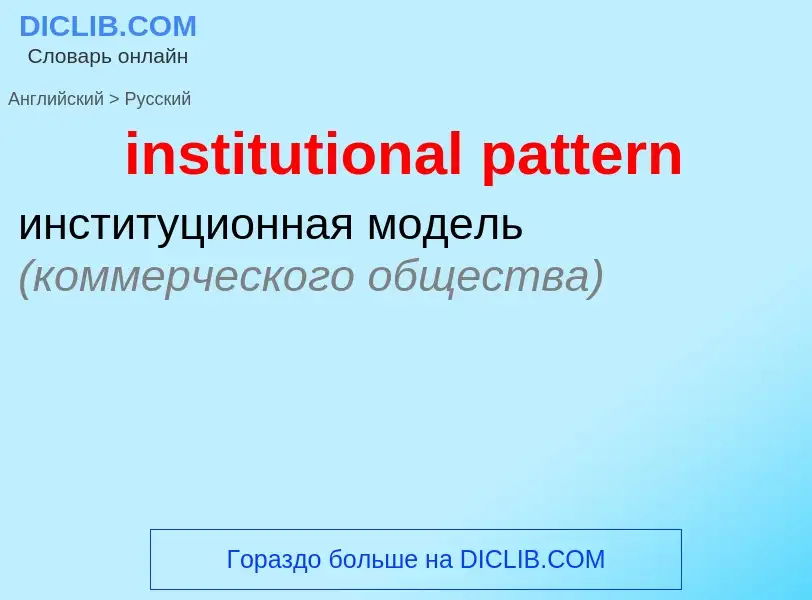Translation and analysis of words by ChatGPT artificial intelligence
On this page you can get a detailed analysis of a word or phrase, produced by the best artificial intelligence technology to date:
- how the word is used
- frequency of use
- it is used more often in oral or written speech
- word translation options
- usage examples (several phrases with translation)
- etymology
institutional pattern - translation to russian
Definition
Wikipedia
An institutional investor is an entity which pools money to purchase securities, real property, and other investment assets or originate loans. Institutional investors include commercial banks, central banks, credit unions, government-linked companies, insurers, pension funds, sovereign wealth funds, charities, hedge funds, REITs, investment advisors, endowments, and mutual funds. Operating companies which invest excess capital in these types of assets may also be included in the term. Activist institutional investors may also influence corporate governance by exercising voting rights in their investments. In 2019, the world's top 500 asset managers collectively managed $104.4 trillion in Assets under Management (AuM).
Although institutional investors appear to be more sophisticated than retail investors, it remains unclear if professional active investment managers can reliably enhance risk-adjusted returns by an amount that exceeds fees and expenses of investment management, due to issues with limiting agency costs.: 4 Lending credence to doubts about active investors' ability to 'beat the market', passive index funds have gained traction with the rise of passive investors: the three biggest US asset managers together owned an average of 18% in the S&P 500 Index and together constituted the largest shareholder in 88% of the S&P 500 by 2015. The potential of institutional investors in infrastructure markets is increasingly noted after financial crises in the early twenty-first century.




.jpg?width=200)
![Fitting a nettle/canvas-fabric on a [[dress form]] Fitting a nettle/canvas-fabric on a [[dress form]]](https://commons.wikimedia.org/wiki/Special:FilePath/Fitting muslin dummy.jpg?width=200)
.jpg?width=200)



![tailor's tack]] with thread to mark a pattern on fabric before cutting the fabric tailor's tack]] with thread to mark a pattern on fabric before cutting the fabric](https://commons.wikimedia.org/wiki/Special:FilePath/Basting pattern markings.jpg?width=200)

